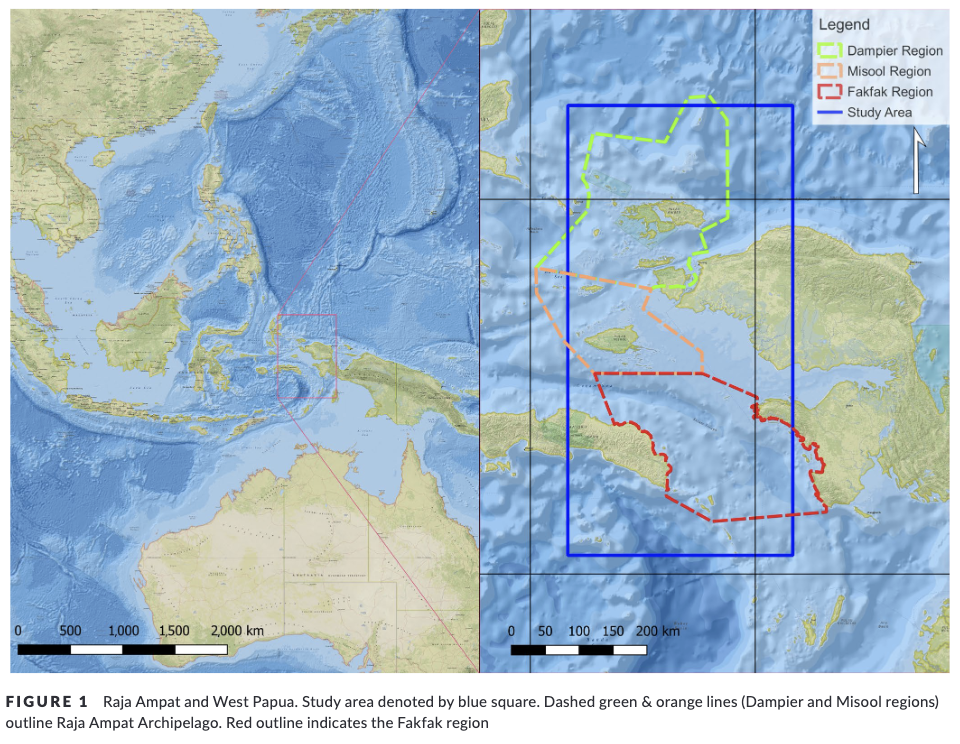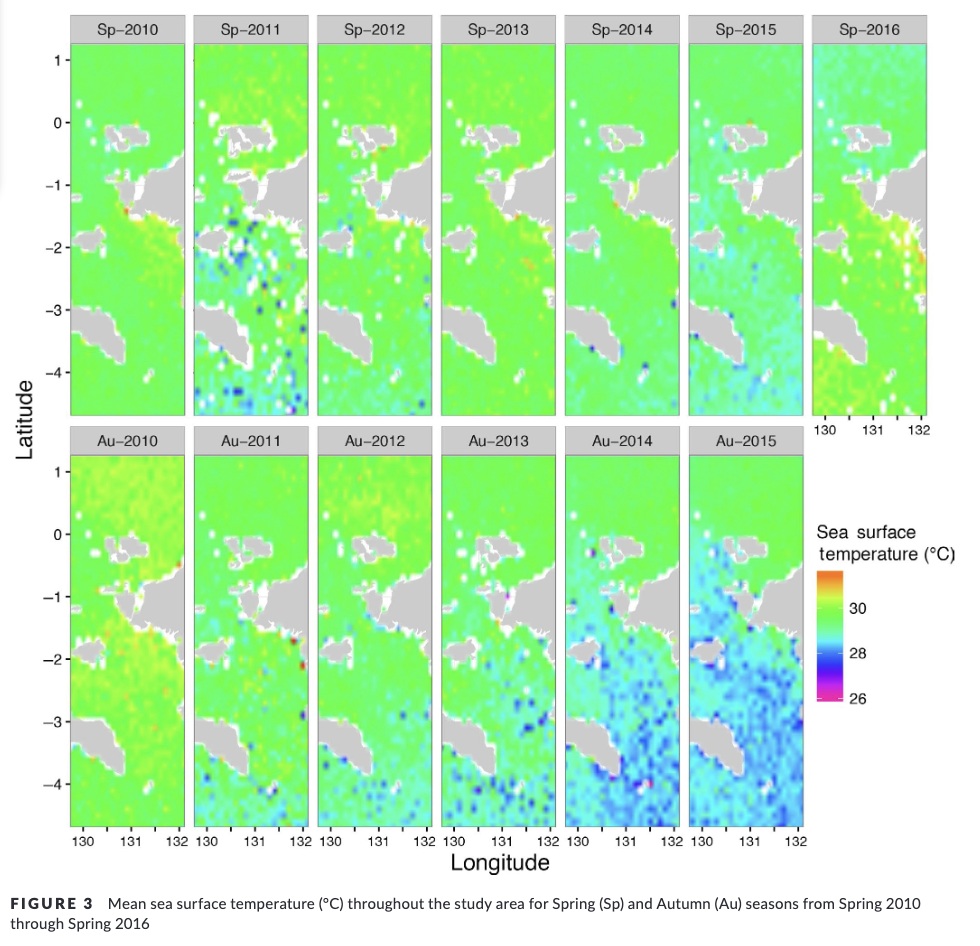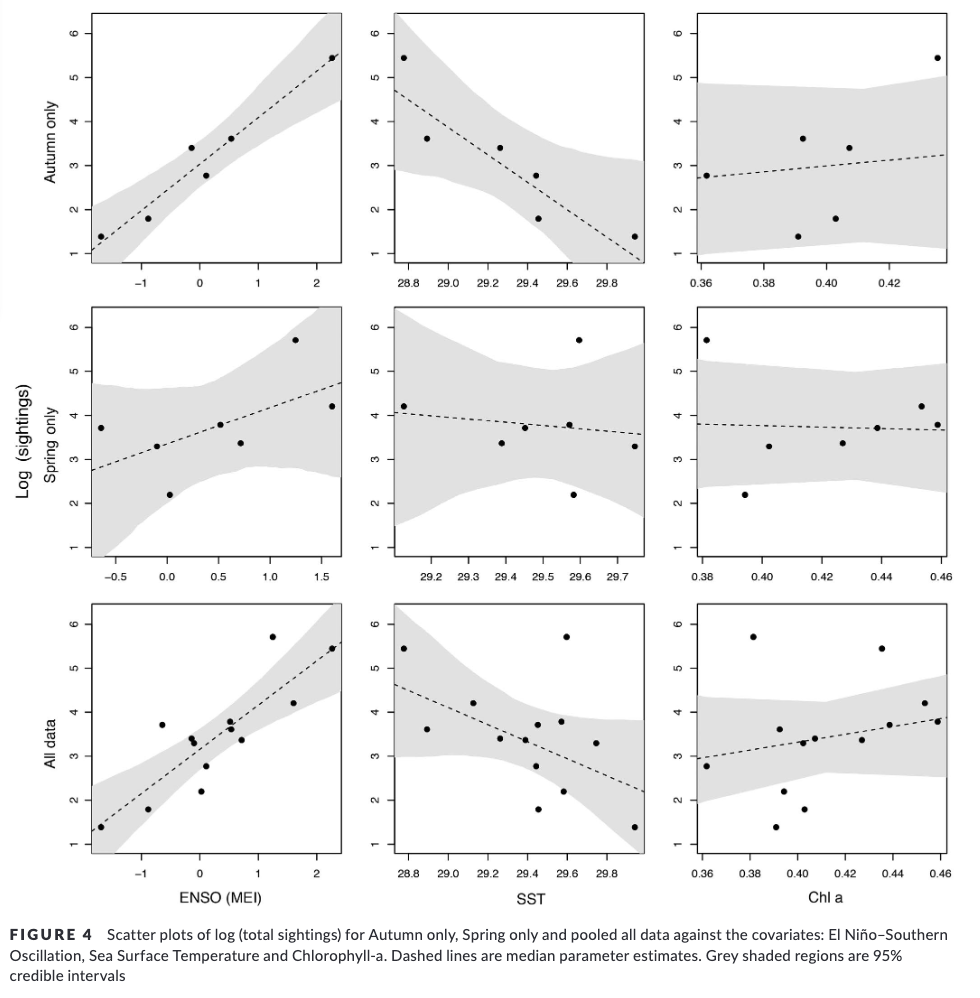Population dynamics of oceanic manta rays (Mobula birostris) in the Raja Ampat Archipelago, West Papua, Indonesia, and the impacts of the El Niño–Southern Oscillation on their movement ecology
July 2019
Calvin S. Beale, Joshua D. Stewart, Edy Setyawan, Abraham B. Sianipar & Mark V. Erdmann
Keywords: Citizen Science • Climate Change • Conservation • Demographics • Marine Megafauna • Mobulid Rays




Summary: This study aimed to understand the population dynamics of oceanic manta rays in the Raja Ampat Archipelago. By collecting sightings data and comparing them with environmental variables, they found a correlation between manta ray sightings and El Niño-Southern Oscillation (ENSO) events and sea surface temperatures. This suggests that manta rays are sensitive to large-scale climatic variability, and the climate crisis could impact their populations. The study emphasises the importance of continued research and management strategies to conserve the species effectively.
Abstract
“Aim
Our aim was to collect sightings data on oceanic manta rays (Mobula birostris) within the Raja Ampat Archipelago to better understand their population dynamics within the region. These data were compared with environmental variables to seek correlates that may explain any variations in observed sightings frequency. Combined, it is hoped this knowledge will be used to aid effective management of this species in the region.
Location
Raja Ampat Archipelago, West Papua, Indonesia.
Methods
We collected and catalogued photo-identification of individuals to create a sightings database. To generate estimates of abundance, survival, sighting probability and recruitment to the population, we used a POPAN mark–recapture model. We considered time-varying and fixed values for each parameter and possible covariate relationships of the El Niño–Southern Oscillation (ENSO) and sex.
Results
A total of 588 individuals were identified over six years, of which 72.4% were female, and 28.2% of individuals were resighted. There was an exponential increase in sightings during the 2015–2016 ENSO event despite constant effort; significant correlation was found between sightings and the multivariate ENSO index and with sea surface temperatures but not with chlorophyll-a. Mark–recapture analysis shows a clear relationship between ENSO and entry probability, and the most parsimonious model estimated a superpopulation size N of 1875 individuals.
Main conclusion
Oceanic manta ray distributions appear to be impacted by ENSO-related climate phenomena. Our findings on the relationship of ENSO to manta sightings and distribution indicate that oceanic manta rays are likely sensitive to large-scale climatic variability. This illustrates the potential impacts of climate change on oceanic manta populations and the need to consider climate impacts in developing management strategies. Continued photo-ID, tagging and population genetics would greatly enhance knowledge and help develop management strategies that bolster conservation of the species.”
Author Affiliations
Raja Ampat Manta Project
The Manta Trust
Scripps Institution of Oceanography
Sea Sanctuaries Trust
Conservation International Indonesia
Conservation International Indonesia Marine Program
Funded by
Misool Foundation
Conservation International Indonesia
The Manta Trust

